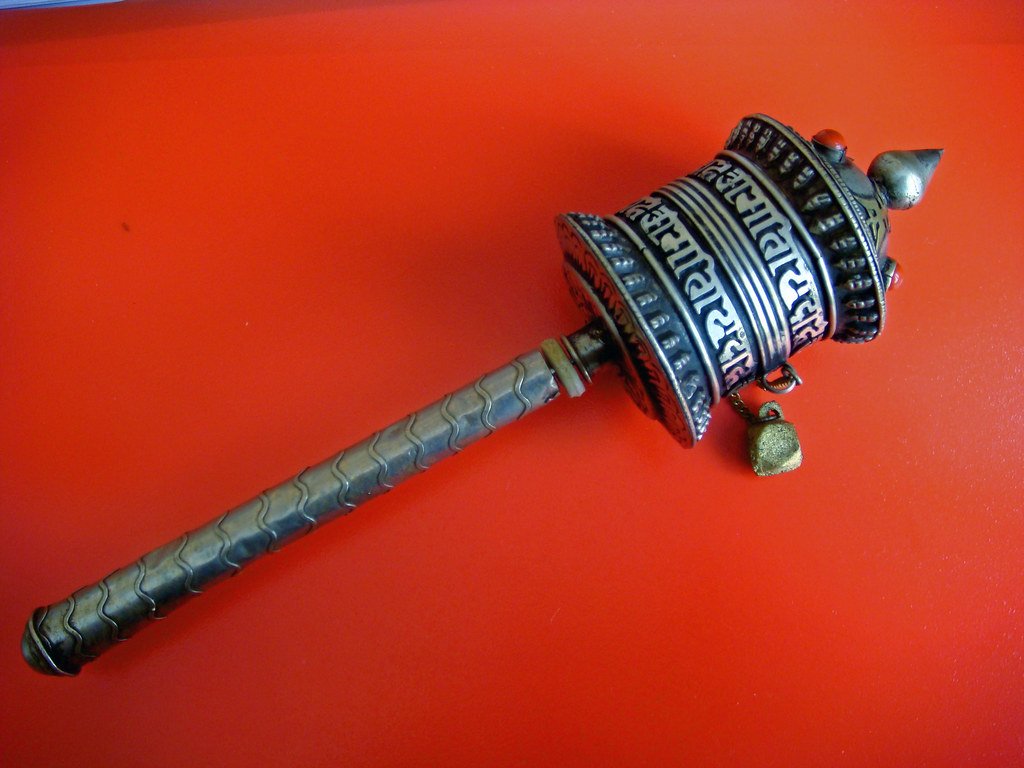Spiritual Significance of Prayer Wheels
Travelers exploring the rich tapestry of Himalayan culture often encounter the enigmatic prayer wheel. This ancient spiritual tool, found in monasteries and temples, offers profound insights into Buddhist practices. In this blog post, we’ll delve into the history, significance, and practical tips for travelers intrigued by these sacred spinners.
Table of Contents
What is a Prayer Wheel?
A prayer wheel, or “mani wheel,” is a cylindrical device inscribed with mantras. The most common mantra is “Om Mani Padme Hum,” which translates to “The Jewel in the Lotus.” Each spin of the wheel is believed to spread spiritual blessings and bring peace.

The Origins of Prayer Wheels
These sacred spinners trace back to Tibetan Buddhism. They were created as an alternative to verbal prayer recitations. The concept is simple: turning the wheel has the same meritorious effect as orally reciting the prayers.
The Spiritual Significance
Prayer wheels embody the core principles of Buddhist teachings. They symbolize the path to enlightenment and the importance of compassion and wisdom. By spinning the wheel, practitioners aim to accumulate merit and purify negative karma.

How to Use a Prayer Wheel
Using a mani wheel is straightforward, but there are customs to observe:
- Approach with Respect: Treat the prayer tool with reverence. Remove hats and avoid pointing feet toward it.
- Spin Clockwise: Always spin the wheel clockwise, following the direction of the sun.
- Recite Mantras: While spinning, recite mantras silently or aloud. The most common mantra is “Om Mani Padme Hum.”
- Mindful Presence: Focus on the act of spinning. Maintain a peaceful and mindful state.
Types of Sacred Spinners
Mani wheels come in various forms. Each type serves a unique purpose and is used in different settings.
Handheld Wheels
Handheld prayer wheels are small and portable. Travelers can carry them easily and use them during personal meditation. These wheels often contain scrolls with mantras inside.

Large Stationary Wheels
Large stationary wheels are common in temples and monasteries. They can be several feet tall and require more effort to spin. Visitors often find rows of these wheels, allowing them to walk and spin multiple wheels in a sequence.
Where to Find Prayer Wheels
Travelers can find these spiritual devices in various parts of the Himalayas. Nepal, Tibet, and Bhutan are prime locations.
Nepal
In Nepal, visit the Boudhanath Stupa in Kathmandu. This UNESCO World Heritage site is surrounded by sacred spinners. Travelers can join pilgrims in a circumambulation, spinning the wheels as they walk.
Tibet
Tibet is home to countless monasteries with impressive prayer wheels. The Jokhang Temple in Lhasa is a must-visit. Here, travelers can observe locals performing their daily rituals.
Exented Reading:
Bhutan
Bhutan’s remote monasteries offer a serene experience. The Paro Taktsang, also known as the Tiger’s Nest, features prayer wheels along the trek. The journey to this sacred site is an adventure in itself.

Practical Tips for Travelers
To make the most of your experience with these sacred spinners, keep these tips in mind:
Respect Local Customs
Understanding and respecting local customs is crucial. Always seek permission before taking photos, especially in sacred areas. Dress modestly and behave respectfully.
Engage with Locals
Engage with locals to learn more about these spiritual tools and their significance. Many are happy to share their knowledge and stories. This interaction enriches your travel experience.
Embrace Mindfulness
Use the act of spinning the wheel as a mindfulness practice. Focus on the present moment and the spiritual journey. This can enhance your travel experience and provide inner peace.

Conclusion
Prayer wheels are more than just spiritual tools. They offer a unique glimpse into Buddhist traditions and Himalayan culture. As a traveler, experiencing the use of these sacred spinners can deepen your understanding and appreciation of ancient practices.
By approaching these spiritual devices with respect and mindfulness, you can connect with the essence of the places you visit. Whether in Nepal, Tibet, or Bhutan, the prayer wheel is a symbol of peace, compassion, and enlightenment. In your travels, may you find peace and enlightenment, one spin at a time.








